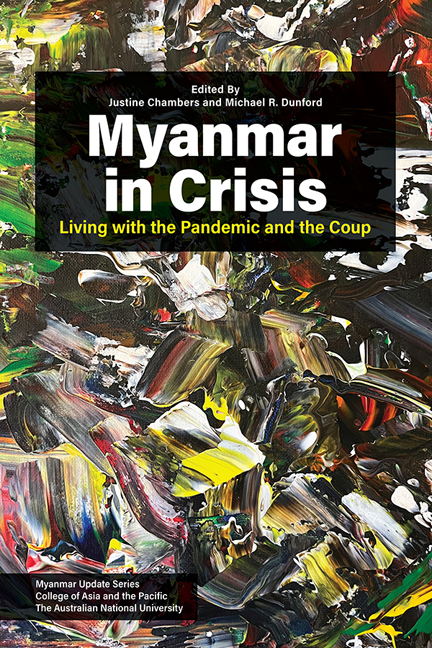3 - The 2021 Military Coup: Causes and Consequences
Published online by Cambridge University Press: 01 March 2024
Summary
The 1 February 2021 military coup in Myanmar ended a decade of political liberalisation and triggered a near-countrywide popular uprising, which soon turned into armed resistance and ultimately all-out civil war. Nearly two years later, the Tatmadaw1 is locked in an existential struggle for the soul of the country with an array of resistance forces, while the state and economy are collapsing, and tens of millions of people face a deepening humanitarian emergency.
The coup followed months of escalating tensions between the military and the civilian government over the 7 November 2020 elections, which delivered a landslide victory to the incumbent National League for Democracy (NLD), but were already mired in controversy before the polls. The military challenged the results, alleging widespread fraud, and sought to delay the convening of the new parliament until its concerns could be addressed, calling first for a special sitting of parliament and later for a meeting of the National Defence and Security Council. Its demands, however, were flatly refused by the civilian authorities, and after last-minute negotiations between representatives of the NLD and the military failed to resolve the brewing constitutional crisis, Commanderin- Chief Min Aung Hlaing at 16:00 on Sunday afternoon, 31 of January, issued a fateful order to his troops to stop the convening of parliament by force.2 In the early morning of the next day, just hours before the new parliament was set to convene, the military thus once again took control of the capital, arrested the country's elected leaders, and declared a state of emergency. The initial takeover was quick and bloodless, but the coup triggered a conflict that has cost thousands of lives and fundamentally changed the face of Myanmar politics.
In the present chapter, I set out to do three things.3 I start by outlining the main contours of Myanmar's post-coup politics. I then try to answer two key questions that have been the focus of much of the post-coup commentary and analysis: What were the reasons for the coup, and what is the likely outcome of the resultant political crisis? The main thrust of the analysis is pessimistic, but the conclusion entertains a few more hopeful possibilities.
- Type
- Chapter
- Information
- Myanmar in CrisisLiving with the Pandemic and the Coup, pp. 41 - 68Publisher: ISEAS–Yusof Ishak InstitutePrint publication year: 2023

